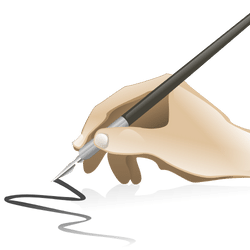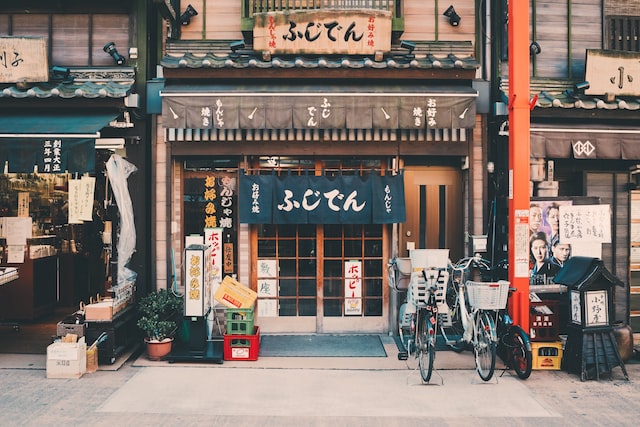The country of Japan is small, but densely populated, with over 800 people per square mile (compared to eighty-five people per square mile in the United States). With more than 90% of the population living in cities, Japanese is a diverse and increasingly endangered language. In addition to Japanese, there are more than thirty dialects. The following are a few common examples. Read on to learn more about the different dialects in Japan. And if you need any help with translation to or from Japanese, the experts at thewordpoint.com are always there to help with the translation of any document or text.
History of Japanese Languages
While there is some progress in saving indigenous Japanese languages, this is far from being a guarantee. While Japanese and Luchuan languages are both closely related, the latter is rapidly being supplanted by standard Japanese. In fact, Luchuan languages were replaced with standard Japanese following the annexation of the Luchuan Islands by the Japanese in 1872. In addition, after the establishment of the prefecture of Okinawa, children of Luchuan speakers were forced to learn Japanese in public schools. By 1907, no longer allowed to speak Luchuan in school.
Despite the fact that there are many factors that influence the decline of language populations, there is one common denominator that is consistent across both global and regional studies: linguistic diversity. Among other things, languages are more endangered in regions with less linguistic diversity. The most common reasons for this are economic development, increased urbanization, illiteracy, and a poor education system. Nevertheless, these factors do not adequately account for the complex interactions between languages and their surrounding environments.
Status of Minority Languages in Japan
In the past, most minorities in Japan were forced to migrate to the mainland, and speakers began to abandon their language and culture. In December 1953, the US returned the island group to Japan. The Miyako language, which was spoken on the islands, did not experience such drastic changes. Instead, speakers slowly adapted to Japanese. This gradual process is called tonfutsugo, and is used in mixed situations.
In the last 50 years, however, the number of native speakers has declined drastically. In the north, a study revealed that there were only thirty Uchinaaguchi speakers, most of whom were octogenarians. The total population of the Uchinaaguchi language is estimated at about 300 people, all of them living in Hokkaido. However, this is only one example of a language that is becoming increasingly endangered.
Languages Spoken in Japan
Nivkh
The Nivkh lived in a mixed population village, where most of their subsistence activities revolved around fishing and hunting seals and sea lions. Land mammals were a secondary source of food, although a dog was a common draft animal. After intensive contact with the Tungus, domesticated reindeer were introduced as a draft animal. However, the language has remained largely unchanged.
Osaka-ben
Osaka-ben is a Japanese dialect that is similar to other regional dialects in Japan, such as Kobe and Kyoto. Many people speaking this dialect are known for their quick reactions and quick talking. Many popular comedians from this region also speak this dialect, and some of their famous phrases are based on it. The term “nandeyanen” means “you’ve got to be kidding!”
Kansai dialect
The Kansai dialect is a group of regional Japanese dialects located in the Kansai region of Japan. These dialects are known in Japanese as Kansai-ben or “Kinki dialect”. In technical terms, they are similar to the Kamigata dialect, which is particularly spoken in Kyoto and Osaka. Both of these dialects were particularly prevalent during the Edo period. Read on to learn about the history of these dialects and their distinctive characteristics.
The Kansai dialect has many unique characteristics. It has a higher tonal range than Standard Japanese. It also uses more vowel-based words, and loanwords are spelled with Tokyo pronunciation in mind. For example, in the city of Ise, the word okini is often pronounced as okina, because the Japanese word for first person is okini. This is a subtle but distinguishable difference.
Hokkaido dialect
The Hokkaido dialect is a Japanese language spoken on the island of Hokkaido, Japan. The language is often called Hokkaido-ben and was originally a relatively recent settlement from mainland Japan. Today, the language has become one of the most commonly spoken dialects in Japan. Despite its relatively recent development, Hokkaido still maintains its distinct features. Listed below are the most important characteristics of the Hokkaido dialect.
Another unique feature of Hokkaido dialect is its word for garbage. The standard phrase for this is “GomiwoShe teru.” This phrase means to “dispose” or “throw” – but this can be confusing to non-Hokkaido speakers. It is also a cause for some shame and misunderstanding. Thankfully, it’s not impossible to learn Hokkaido dialect. While the language is similar to standard Japanese, there are some distinct differences in its pronunciation. For example, “shika-eru” is similar to the standard word for cold, but sounds more like a shiver. Shibareru is also used for a variety of adjectives, and is closer to “metcha” than “cho.”
Amami dialect
The Amami language is a Ryukyuan language spoken in the Amami Islands in the southern part of Japan. It is one of the northern branches of the Ryukyuan language family. It has many dialect groups, including Yoron, Okinoerabu, and Tokunoshima. There are around 9900 people who speak the Amami language. The language is not officially recognized in Japan, but the Amami people have a distinct dialect.
The Amami dialect is a form of Northern Ryukyuan, part of the Japonic language family. It is spoken by about 100 people in a village on the island of Amami-Oshima. The grammar consists of four hours of recordings from a small community in Japan. It includes discussions of phonology, nominal phrases, verb morphology, predicate clauses, and particles.
Ryukyuan dialect
The Ryukyuan dialect in Japan is a unique language whose speakers are almost completely incomparable to each other. Despite the wide variation of the dialect, it is generally unintelligible to other Ryukyuan languages. For example, Yonaguni has only three vowels, while Amami varieties may have up to seven vowels. In addition to its wide variety, the dialects of the Ryukyuan Islands have distinct sociocultural contexts. For example, the Yonaguni dialect is dominated by people who were born after 1950, while in other island groups, the language was mainly spoken by younger people. While Standard Japanese spread rapidly to the islands, the dialects of the Ryukyuan island groups continued to be spoken.
Balance academic responsibilities and personal commitments more effectively with the support of the top paper writing services review.
Although the Ryukyuan dialect is distinct from Japanese, it is closely related to the Japanese language. Though they are not mutually intelligible from each other, they are considered separate languages. This has led to their classification as dialects of Japanese within the country. In fact, since World War II, the majority of mainland Japanese have regarded these languages as a dialect of Japanese. In this article, we describe the differences and similarities between these two dialects.
| Rank | Language | Number of Speakers in Japan (estimates) |
|---|---|---|
| 1 | Japanese | 121 million |
| 2 | Ainu | almost extinct |
| 3 | Amami-Oshima, Northern | 10,000 |
| 4 | Amami-Oshima, Southern | 1,800 |
| 5 | Kikai | almost extinct |
| 6 | Kunigami | 5,000 |
| 7 | Miyako | 67,000 |
| 8 | Okinawan, Central (Okinawan) | 985,000 |
| 9 | Oki-No-Erabu | 3,200 |
| 10 | Toku-No-Shima | 5,100 |
| 11 | Yaeyama | almost extinct |
| 12 | Yonaguni | 800 |
| 13 | Yoron | 950 |
Languages Spoken Around the Japanese Islands
Tokyo dialect
The history of Japan dates back thousands of years. For most of this time, Japan was a tiny island nation, with little contact with outside countries. The strongest influence was mainland China, and Chinese was the main language spoken among the aristocratic classes for a few centuries. As time passed, Japan began to develop its own language and dialects. Regardless of the area you visit, you are likely to come across different dialects of the language.
While Japanese is the most common language throughout the country, minor dialects are still widely spoken on smaller islands. As Japan opened its doors to foreign languages after decades of isolation, it now has speakers of French, Spanish, German, Portuguese, Russian, and even English. In some areas, you’ll even hear English and Korean. The language is often confused with Japanese, but it’s still a fascinating language to study. In addition to Japanese, you’ll find many homonyms, and even a few words that have no direct relation to each other.
Okinawa dialect
The Okinawa dialect is a unique language spoken in the islands of southern Okinawa and the surrounding islands of Kumejima and Kerama. In addition to the island of Okinawa, this dialect is also spoken on the small islands of Aguni and Tonaki. These dialects have distinct sounds and are characterized by their unique regional idioms. The Okinawa dialect can be divided into two main types: Central Okinawan and Southern Ryukyuan. Both are similar in pronunciation, but there are slight differences between the two.
The Japanese Empire referred to Okinawan dialects as “hogen” during World War II as a way to create support for monoculture and to discourage the practice of other languages. Although the Japanese Empire was forced to adopt this terminology, it still remains one of the most recognizable regional languages of Japan. Despite its differences, Okinawan dialects have a wide range of expressions, from “thank you” to “you’re welcome.”
Miyako dialect
The Miyako dialect has three distinct accent patterns. One is based on the Ikema dialect, the other on the Central Miyako dialect. Miyako speakers are primarily indigenous to the islands of Shikoku, Honshu, and Aomori. The Ikema dialect, the closest to Miyako, has a consonant system containing nine consonants, including velar, geminated, and rounded e.
The Miyako language is one of the Southern Ryukyuan languages, and is closely related to Yaeyama. Although there are few native speakers of Miyako, it is classified as a dialect by the Japanese government. The younger generation of Miyako speakers predominantly speak Japanese as their first language. The Miyako language is spoken by around 4,000 people in Japan and has the status of a dialect. Its speakers are also scattered throughout the world.
Yaeyama dialect
The Yaeyama dialect is a type of Japanese language. The pronunciation is similar to the Japanese “w,” but there is one major difference: the Yaeyama language has fewer vowels. Specifically, the Yaeyaman has three vowels instead of five. Consequently, the modern Japanese “e” sounds like the Yaeyaman cognate “i” or “u.”
This language is spoken primarily on the Yaeyama Islands, which are part of the Ryukyu islands off the coast of Japan. The language is closely related to Miyako, although the Yonaguni island speech is considered a separate language. It split from the Proto-Japonic language as speakers migrated to the Ryukyu Islands. Although the Japanese government does not consider the Yaeyama dialect its own language, UNESCO and most linguists consider it its own language.

